



ello,
For a fan of historic competitions, the 10000 Tours of Le Castellet is a not-to-be-missed yearly appointment.
2018 was not an exception to the rule; on the 1st and 2nd of September, there were again profusion of wonders speeding on the track : 8 classes, 11 races, 298 cars and more than 400 drivers, who made the spectators travel back in time, from the 50s to the 90s.
The Endurance Legends is a new series; recent historic cars doing demo laps only : Peugeot 908, Maserati MC12, Ferrari 333SP...
Once more, Let's salute the free access to the paddock for the fans, which is not so frequent nowadays.
There are still some points to be improved : the F1 seats were sadly empty; the spectators were allowed to stay only on the 'permanent bleachers' of the Grand Prix Hall, and on the small portions of mounds spared by the F1 installations.
Let's move forward to a (obviously subjective) selection of my pictures, taken during this 9th round of the 10000 Tours !
onour to whom honour is due... Not only one, But TWO Peugeot 905 !
No need to present the deadly weapon of the early 90s in sport prototypes, created by André de Cortanze for Peugeot Talbot Sport.
Both were in 'Evo 1Bis' configuration : adjustable front wing, biplan rear wing, tunnels beside the cockpit to feed two side radiators.
These were some of the improvements to take a step ahead on the rivals: it will indeed be successful, in 1992 and 1993.
The #2 (EV16) has taken the 3rd place at Le Mans 1992 (Alliot / Baldi / Jabouille), and has won Donington and Magny Cours meetings. Damaged during the LM 1993 trials, it did not enter the race.
Regarding #4 (EV14), it was engaged since 1991, and therefore suffered from reliability issues, like any new racing car.
it gave up at Suzuka, Monza and Le Mans, and took the sixth place at Silverstone. Starting from the second half of 1991, it was converted into '1Bis' version, and finished 2nd at Magny Cours and Mexico;
In 1992, it was assigned the anonymous role of 'spare car'.
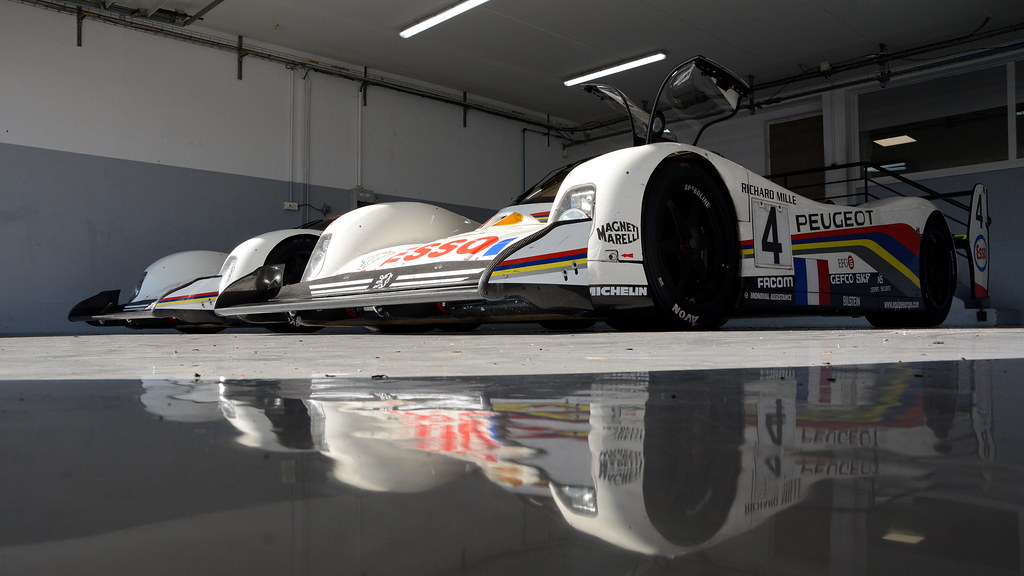


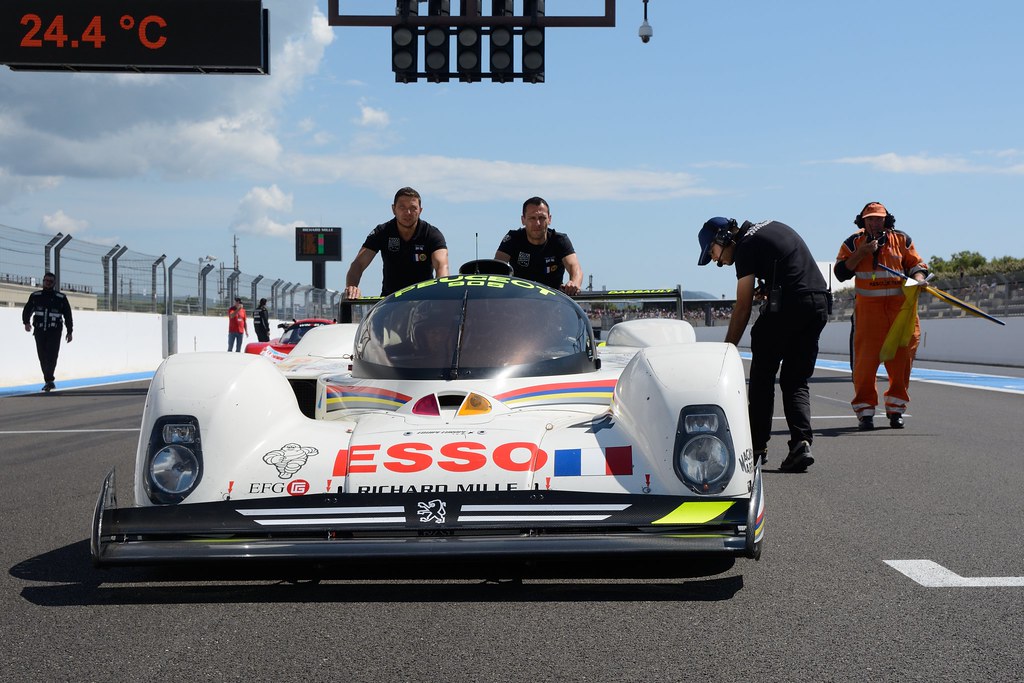
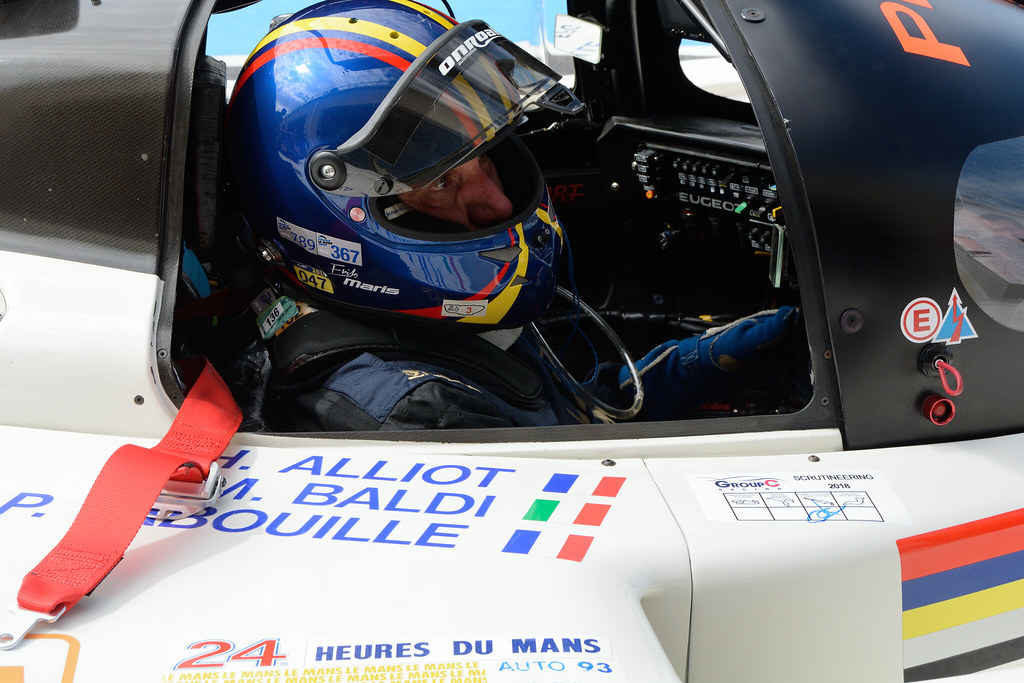
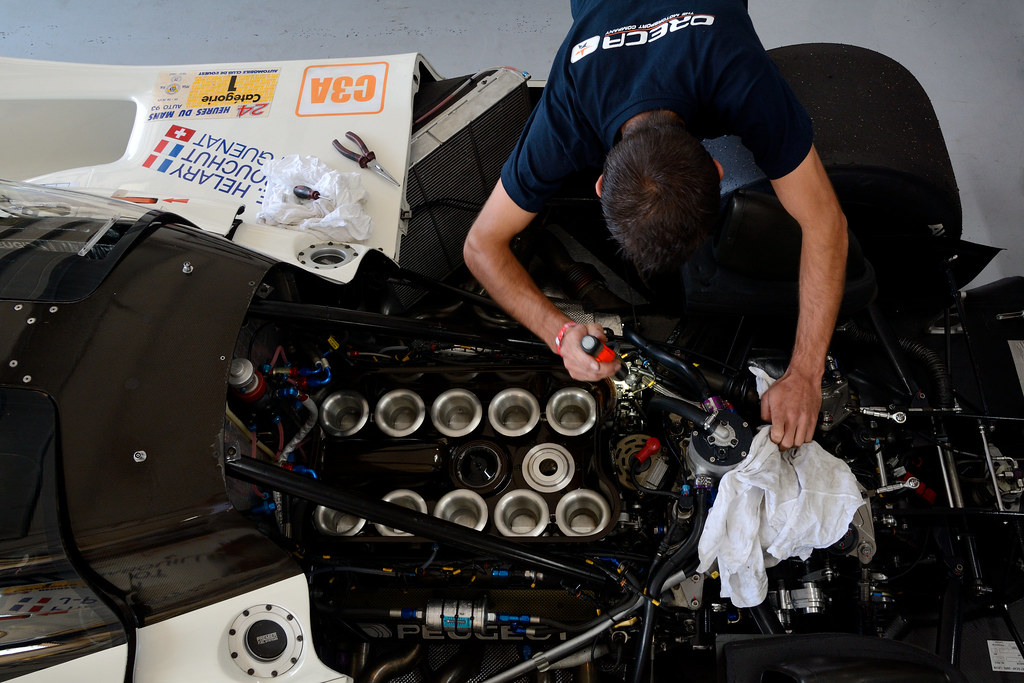
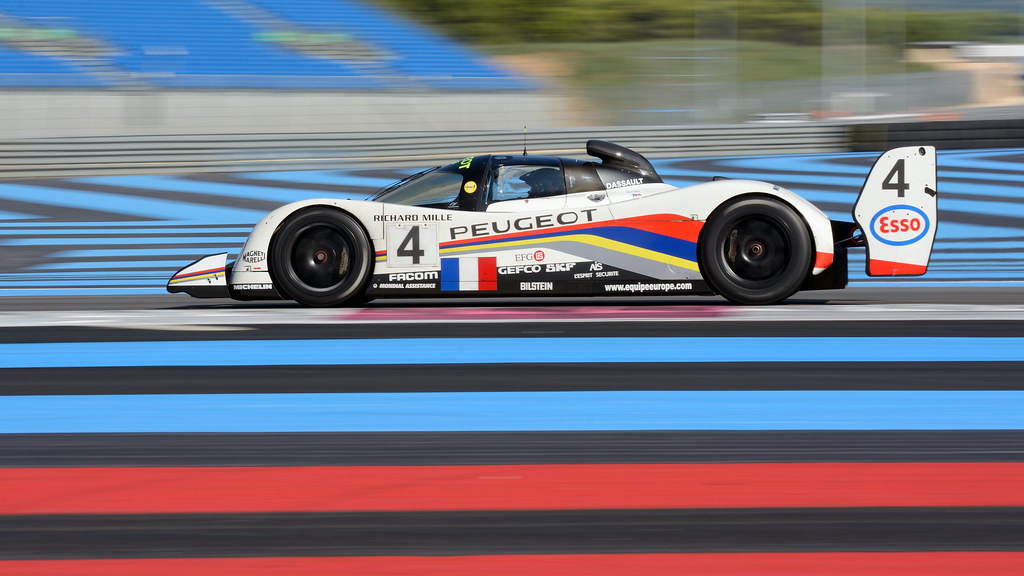
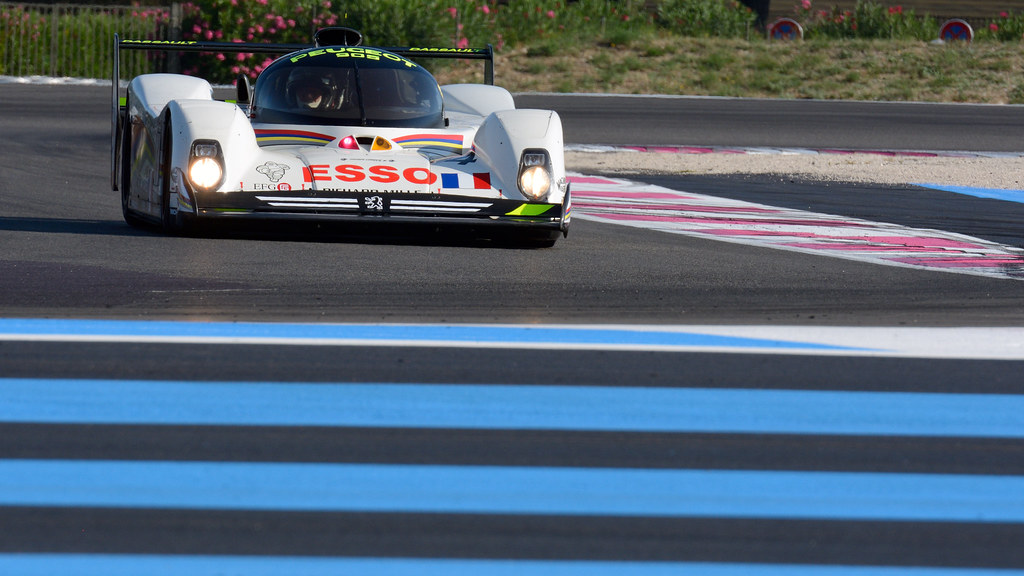
he prize list of this Gebhardt is as empty, as the one of the 2 monsters above is glorious !
Born in 1991 with an Audi 5 cylinders engine, it enters few races in the United States and in the Interserie championship, with poor results.
Then in 1992, equiped with a more ambitious Cosworth V8, the performances are not better. In Monza, it is not classified, same in Silverstone. It finished 10th at the Nürburgring in Interserie. The C91 becomes G4 in 1998, in spyder configuration (!), and will not be selected for Le Mans.
Nowadays, with every detail being taken care, and thus a far better reliability, the V8 Cosworth is singing well, under its mythical 'Momo' livery.
We are forced to admit that its performances have nothing more common with its mediocre beginnings : it plays now on the same field than the Mercedes, Porsche and Nissan... What a late revenge for this all-carbon magnificent prototype, with a so carefully studied aerodynamics !


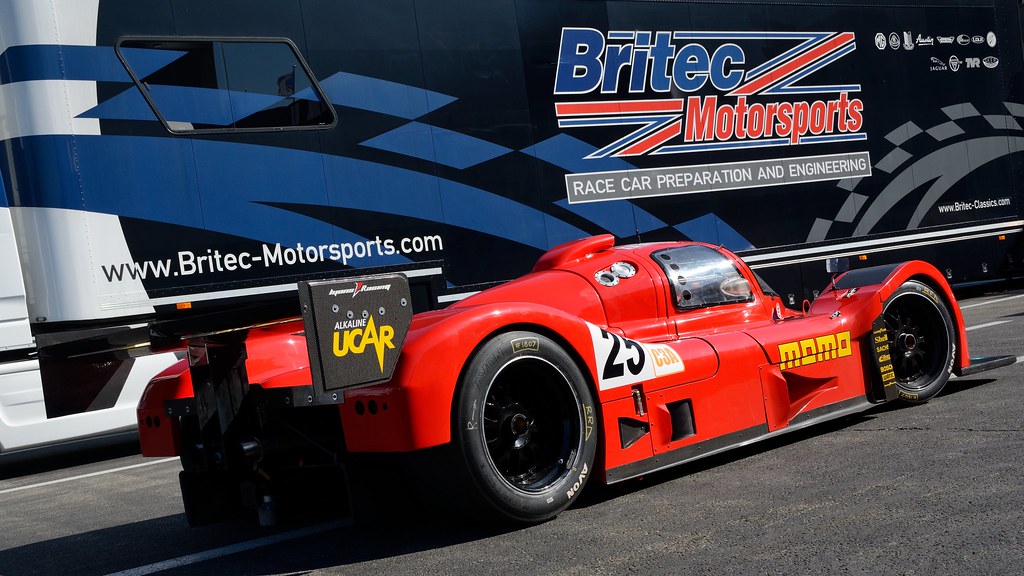

et's stay in the 'Momo section' : here is a detail of the Ferrari 333 SP (chassis #019) which is nothing less than one of the most prestigious chassis of the Italian brand.
Indeed, this one has won the Daytona 24hrs AND the Sebring 12hrs in 1998 !!!
I already caught it in private tests (March 2018), but this time I did not see it on the track (I suppose it ran only on Thursday).
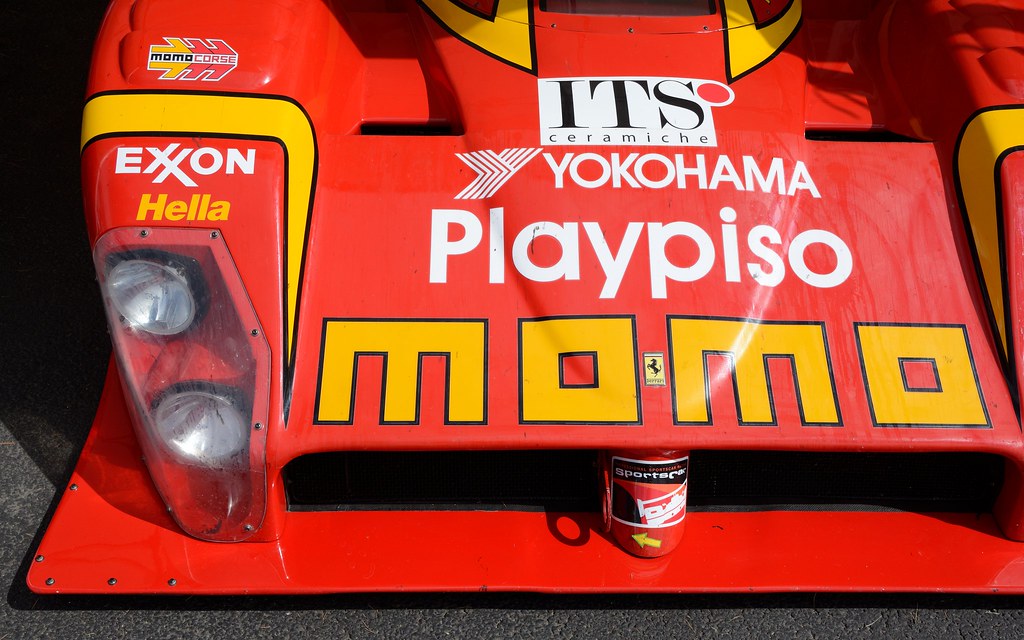
ortunately, another 333 (the #034 chassis , which never raced) took over the initiative to distil the exquisite symphony of its V12...
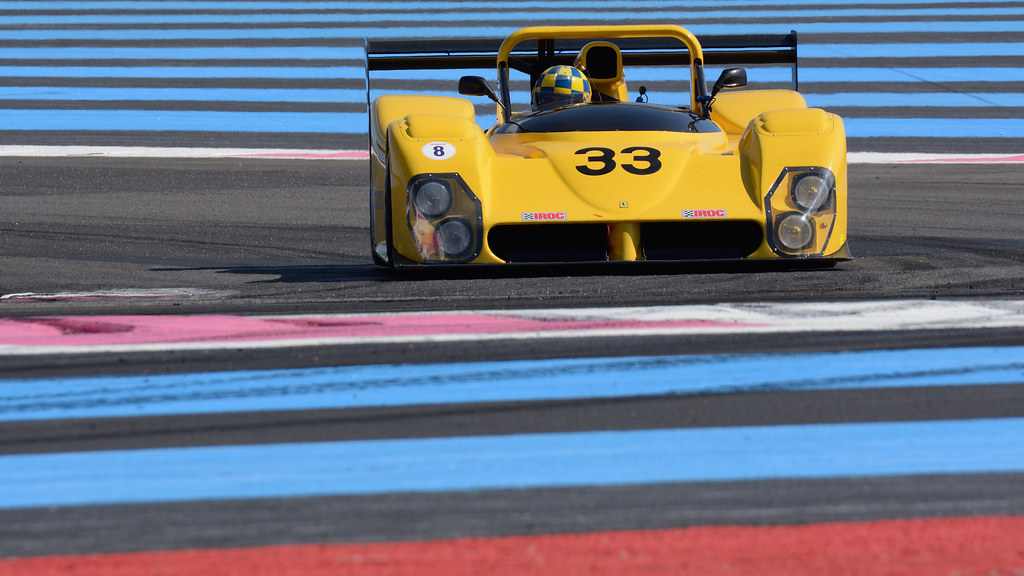
till a yellow Ferrari, the 512M (#1002) which is an evolution of the 512S, to (try to) challenge the dominating Porsche 917 : optimized aerodynamics, lighter chassis, bigger brakes.
Numerous 512S were re-configured into 512M, such as this chassis. Its main results, under the spanish Escuderia Montjuich banner, are a 2nd place at the Paris 1000km in 1970, then same at the Tour de France auto in 1971.
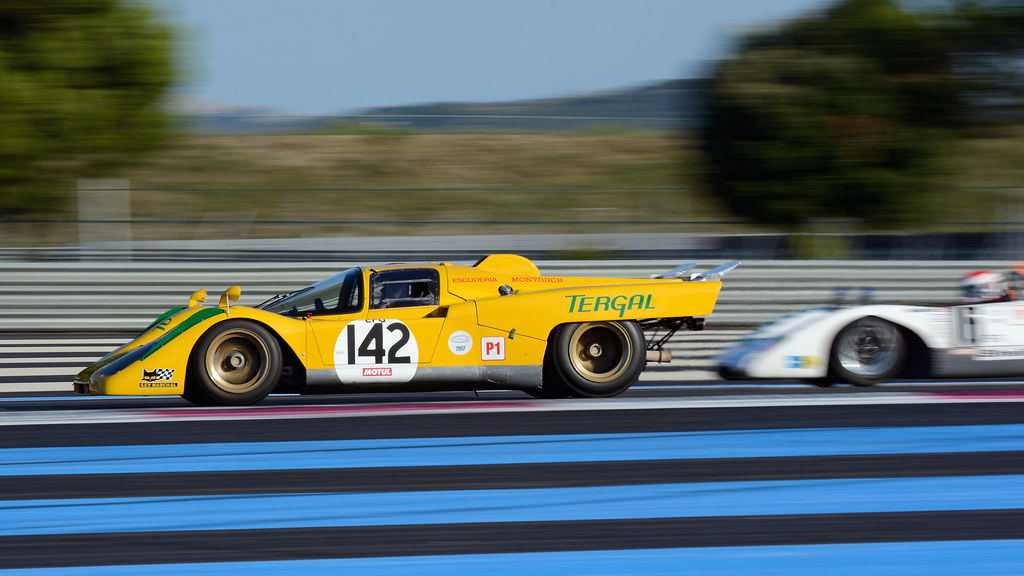
here were many other specimen of the famous 'Cavallino Rampante' attending the meeting. I have chosen herebelow a very special bodywork.
The 250 GT Drogo (#1717GT) was born as a 250 GT Pininfarina; after a crash it was rebuilt by Piero Drogo in 1965, in the '250 GTO' spirit : long hood and truncated tail. The result irradiates its classic elegance...

t the 10000 Tours, the wonders are often twins : another 250 GT Drogo was present (#2391GT) !
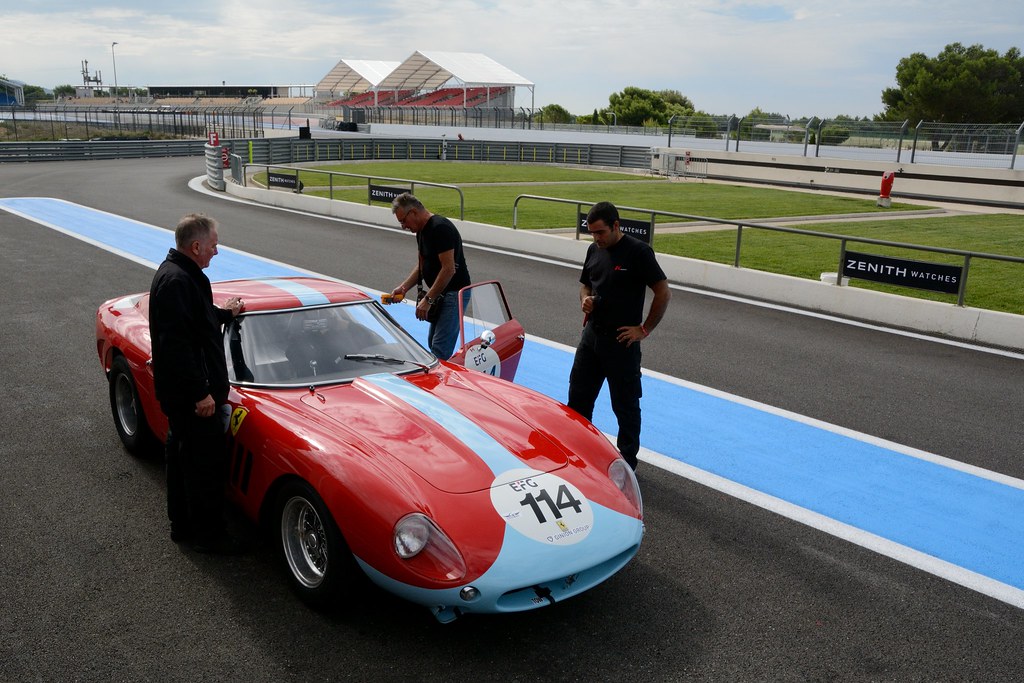
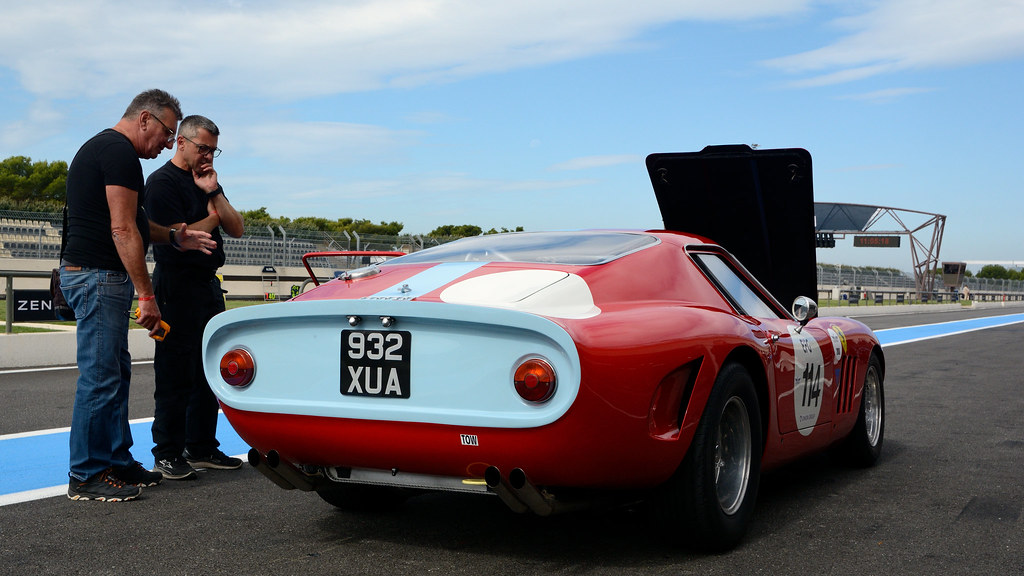

rom a 'Cavallino Rampante' to another, here is an overview of the Porsche armada...
Two monstrous Porsche 917/010 were present. First of all, the chassis #001, which was the test car of the Porsche factory team in 1971. Under numerous bodywork versions (5 in total),
it was intensively tested in wind tunnel, and on the Weissach track, in both 5.0 l (naturally aspirated) and 4.5 l (turbocharged) mechanics.
It was sold to Willie Kauhsen in 1972, who preferred the turbocharged version. A series of honours placements followed in Interserie.
In 1974, Emerson Fittipaldi drove it at the Nürburgring 300kms, to learn the track in view of the German F1 Grand Prix.
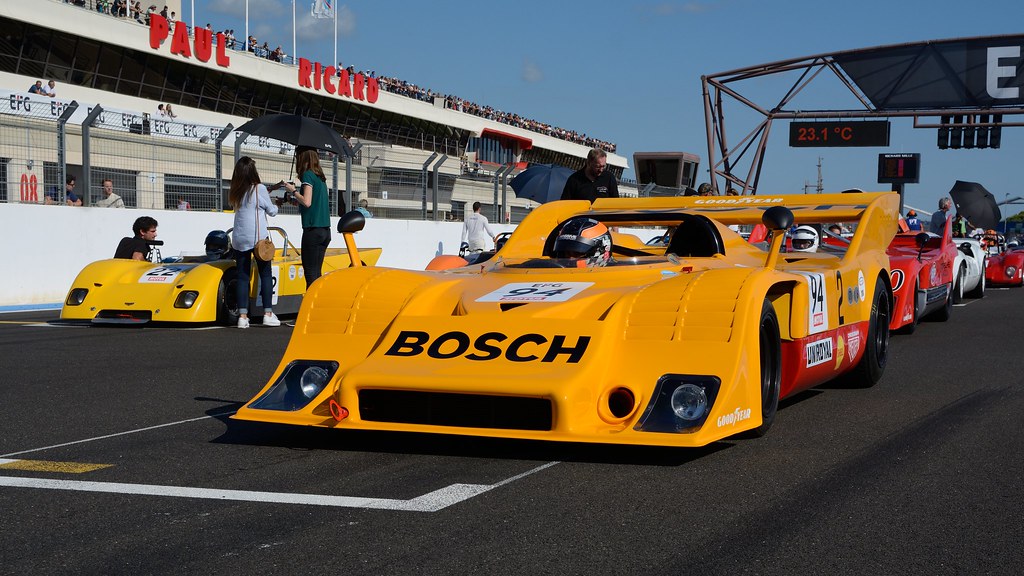
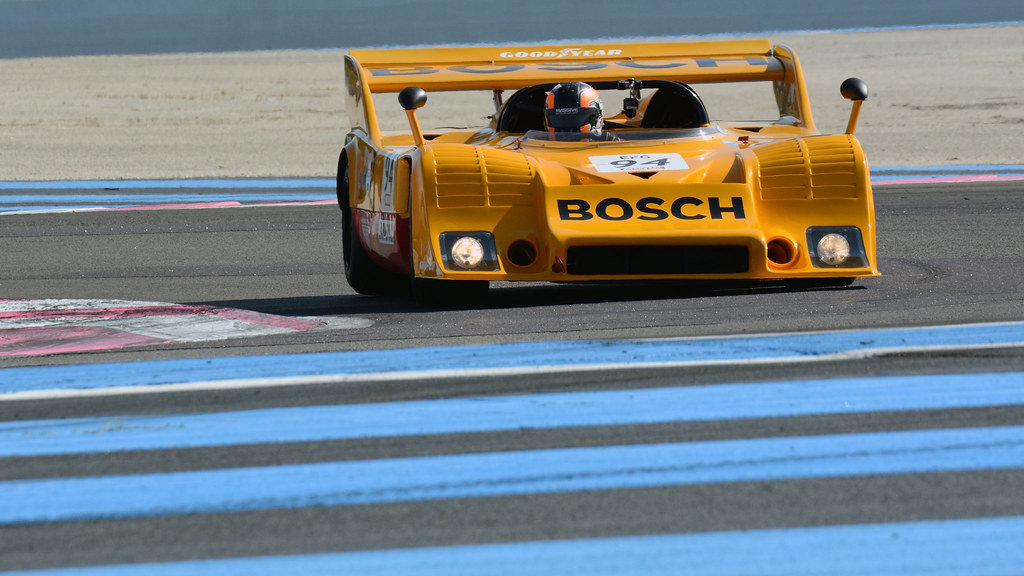
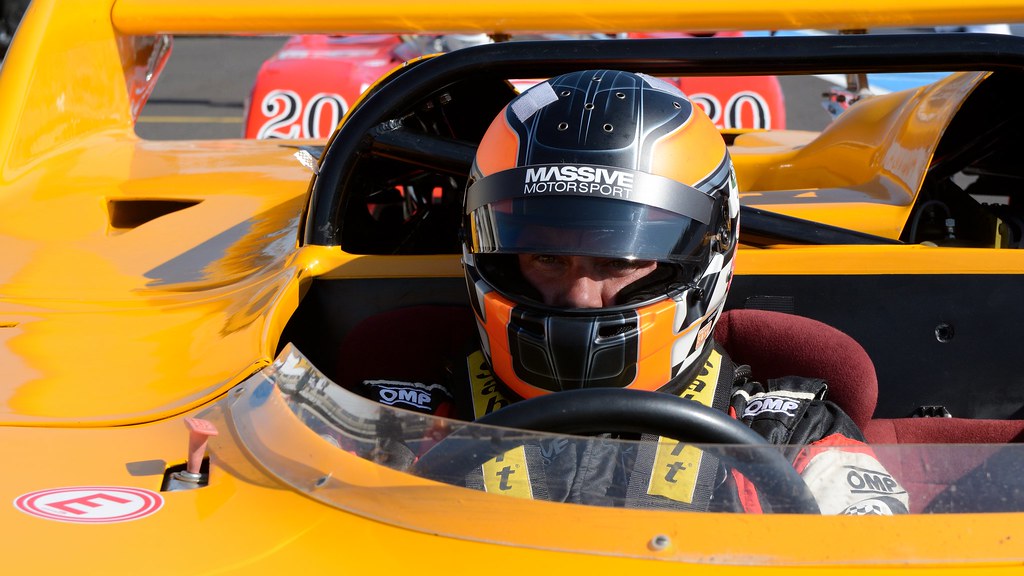
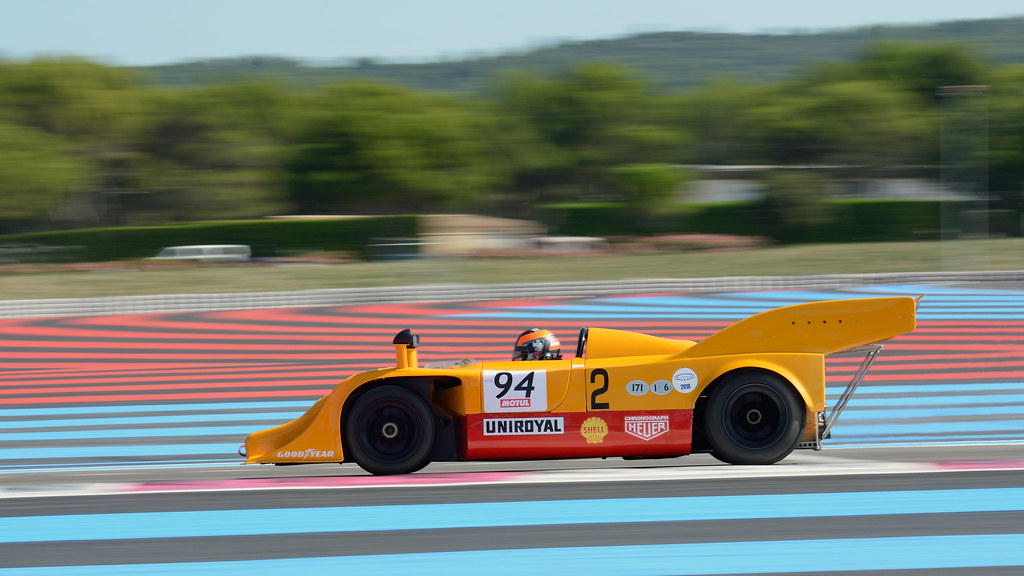
ere is its 'sister car' #002, which career began in 1971 in Can-Am, wearing this STP livery, driven by Jo Siffert. Among other results, there are 3 podiums at Watkins Glen, Mid-Ohio and Road America.
Bought in 1972 by Willie Kauhsen (again !) and repatriated in Europe, it continued to play in the front rows (victory at Imola, in Interserie).
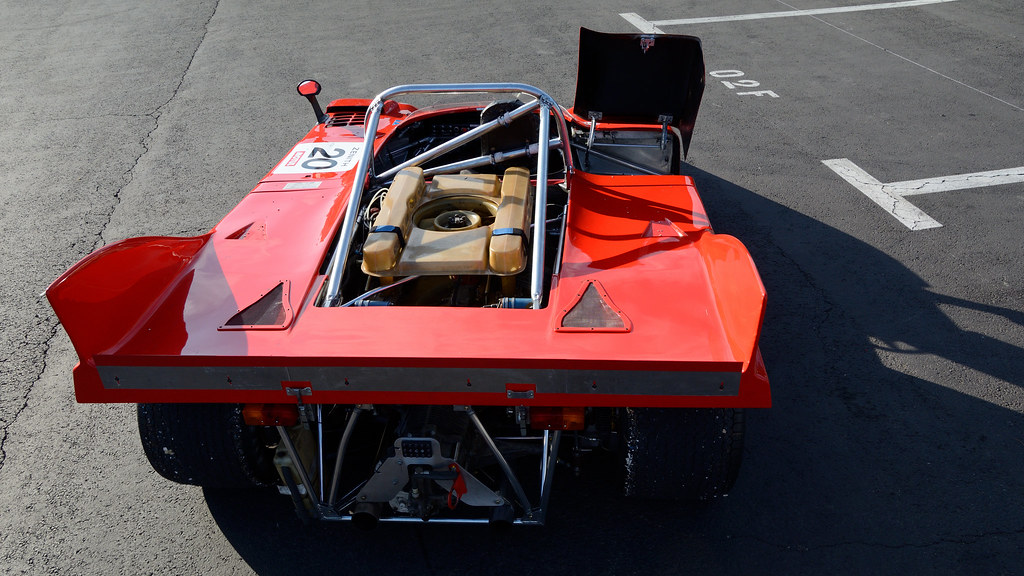
et's continue with a selection of Porsche that attended this meeting.
962-141 has been engaged in Daytona and Sebring; it was the working tool of Derek Bell and Henri Pescarolo...

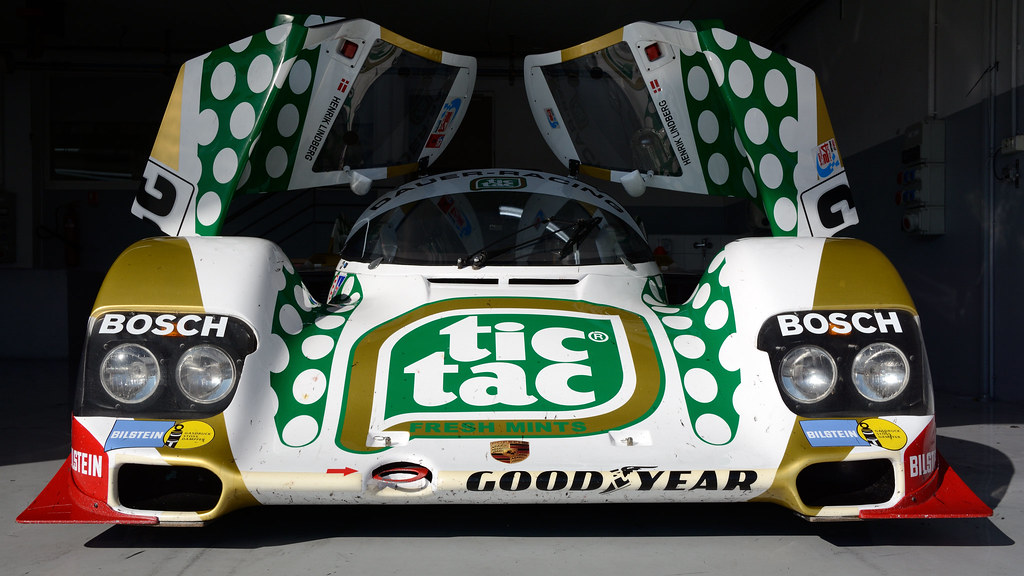
he newly created Porsche 911 2.l series is again a true success to the credit of Peter Auto (32 cars)...
Trajectories searching the limits (and sometimes going beyond), brakings at the 'too late' sign, and hard battles guaranteed !
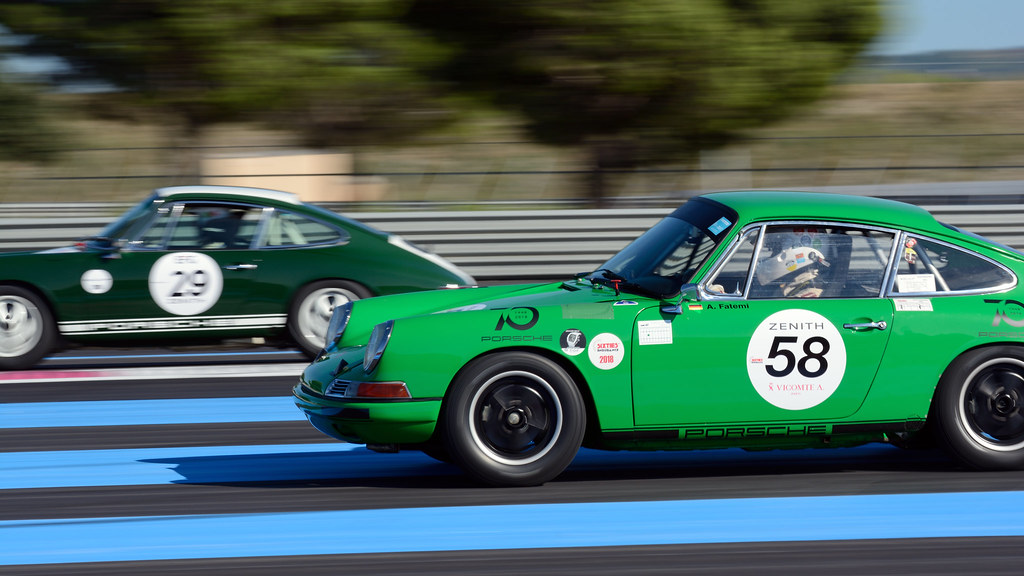
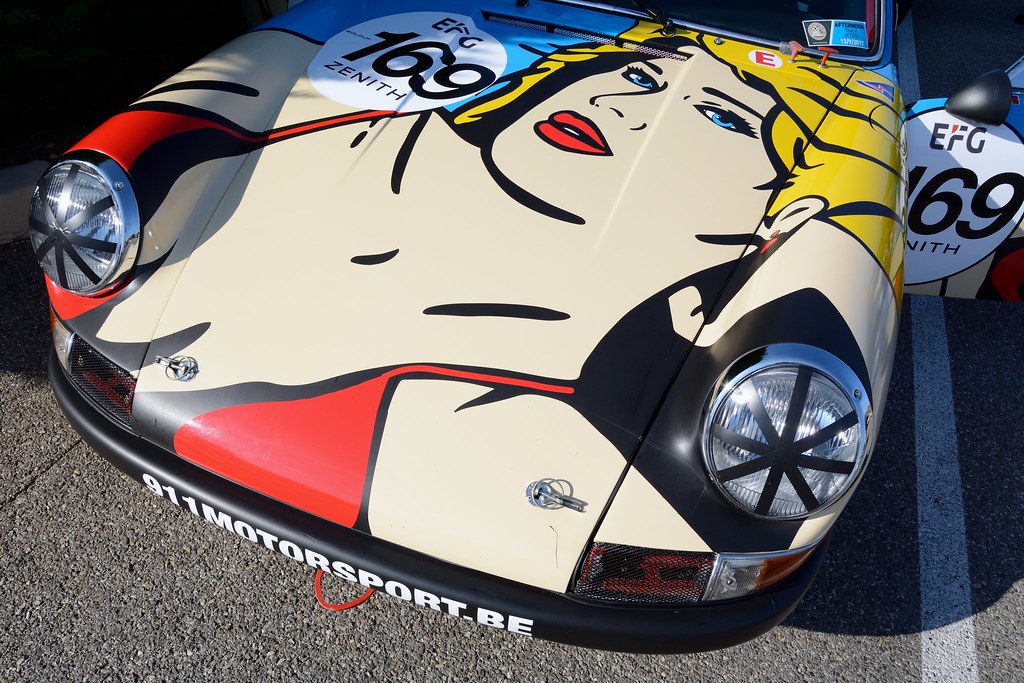
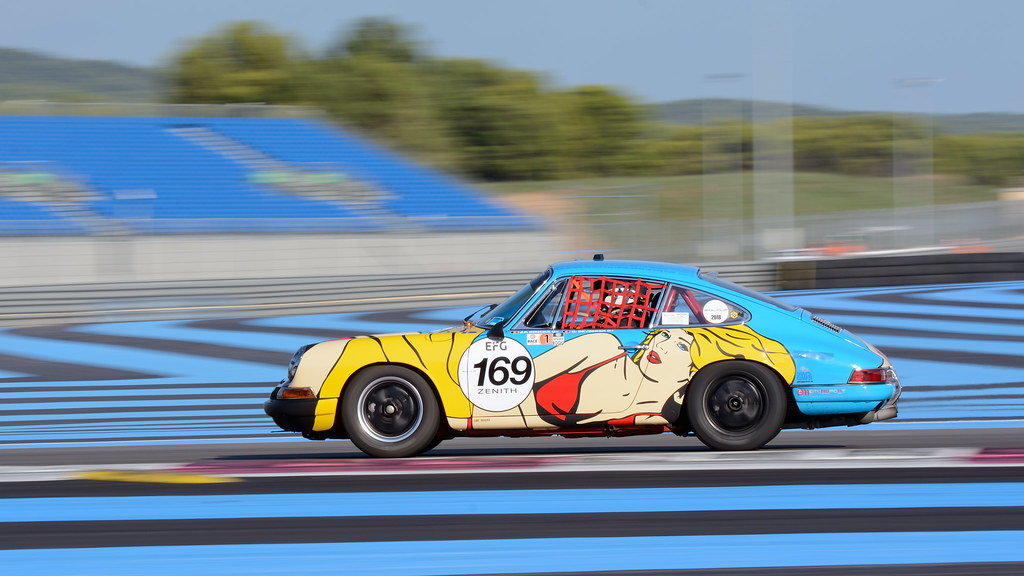
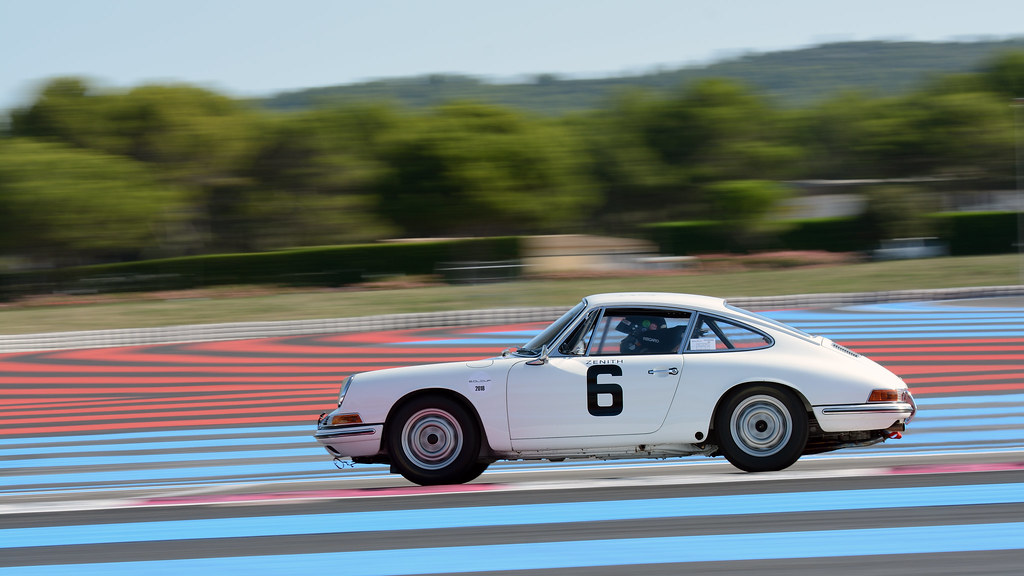
ee herebelow some classic Porsche, that are as many regular participants of the historic meetings.
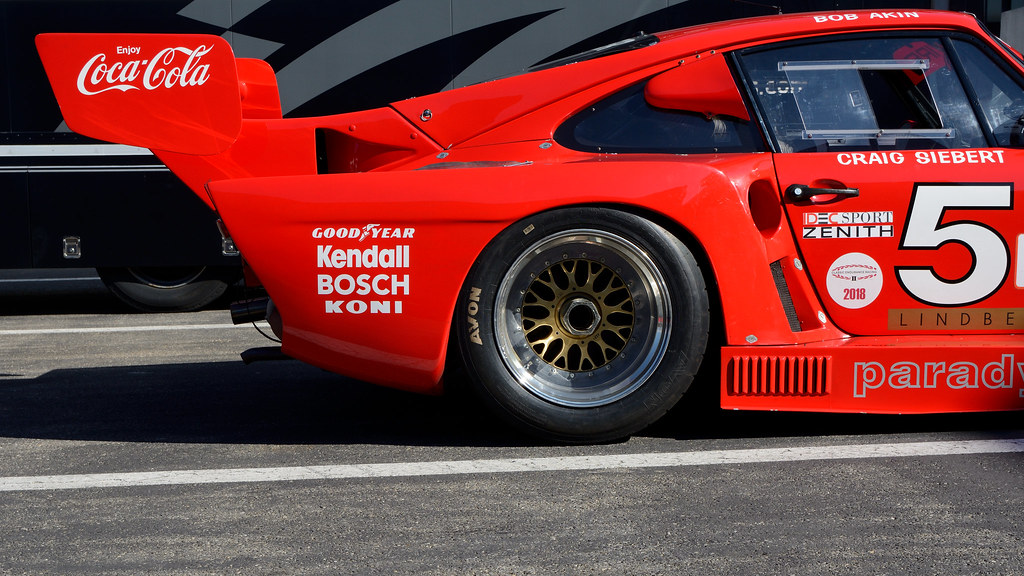
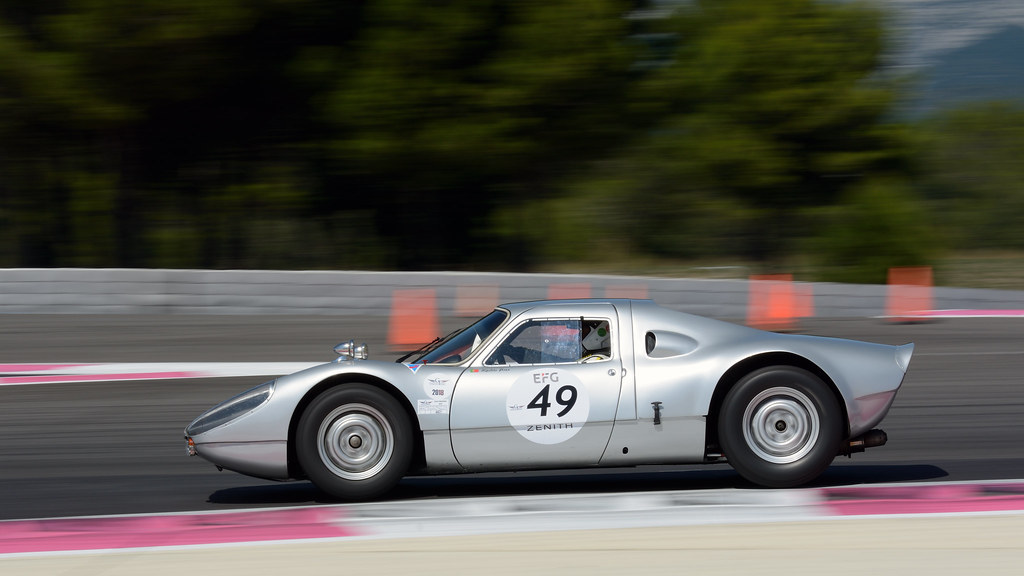
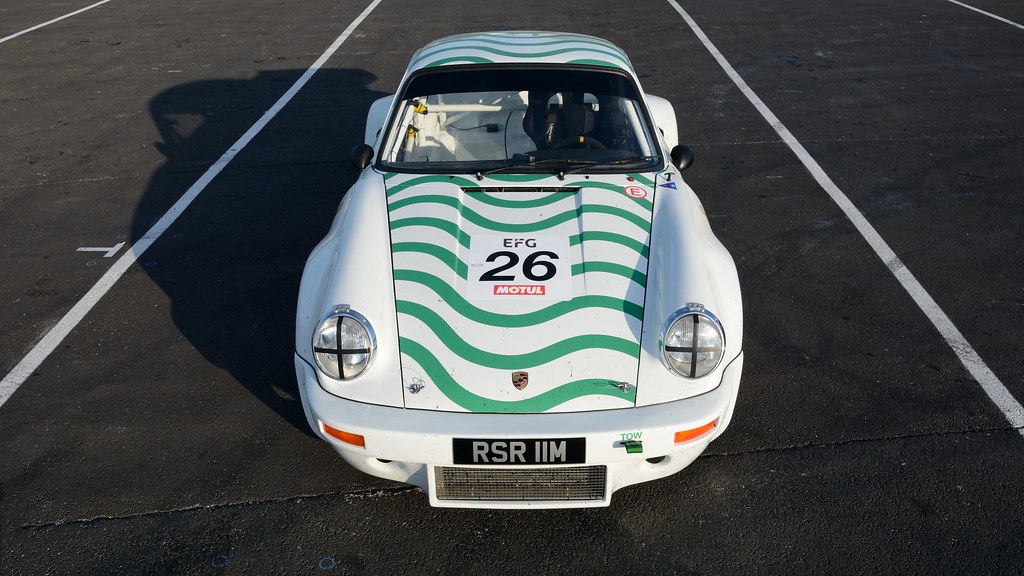
he exotic 'Maldives' livery of this 996 RSR (Le Mans 2004) is absolutely magnificent !

ack to the GroupC with a Kremer 962, #CK6-06/02, which has been decorated by the German artist Peter Klasen in 1990.
It is the only 962 to perpetuate the 'art cars' tradition. Used after Le Mans as a spare car, its career took a new start in La Sarthe in 1993, under other colors.
It was recently reconditioned in 'Klasen' livery, and even signed again by the artist...
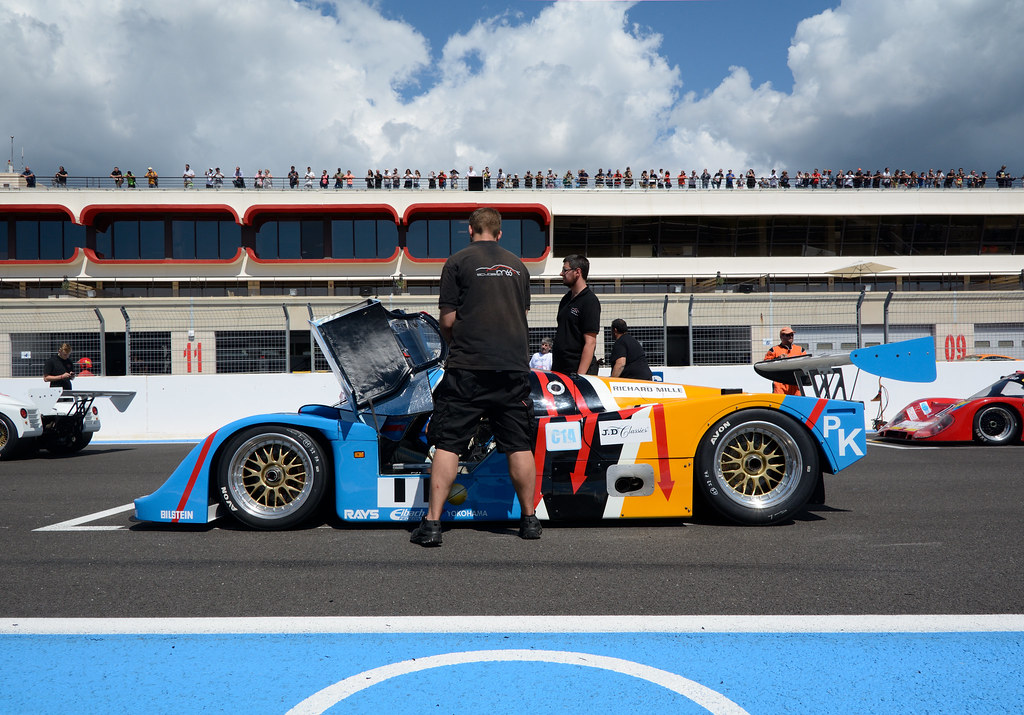
n 1990, Nissan retired from the Sport Prototypes World Championship, and shifted on the All Japanese Championship.
Lola delivered this R90C-07 chassis to Nissan in 1991, which obtained probative results (7 podiums in 1991-1992, but no victory)
and a 8th place at the 1992 Daytona 24hrs. Among its drivers, one can find some true talents like Heinz-Harald Frentzen, Mauro Martini or Volker Weidler.

ola, follow up. The Huntingdon firm is not only a recognized subcontractor (I refer to the Nissan above), but also a full-fledged trade mark, which we owe pure jewels, like these two T70's.
The yellow one is SL76/148. Driven two times by Ronnie Peterson, the car was severely damaged but rebuilt in 1969, using a new Lola chassis.
Talking about the red spyder (SL71/49), it must be a 'continuation', given that the spyder serial numbers officially end at SL71/48... To be confirmed.
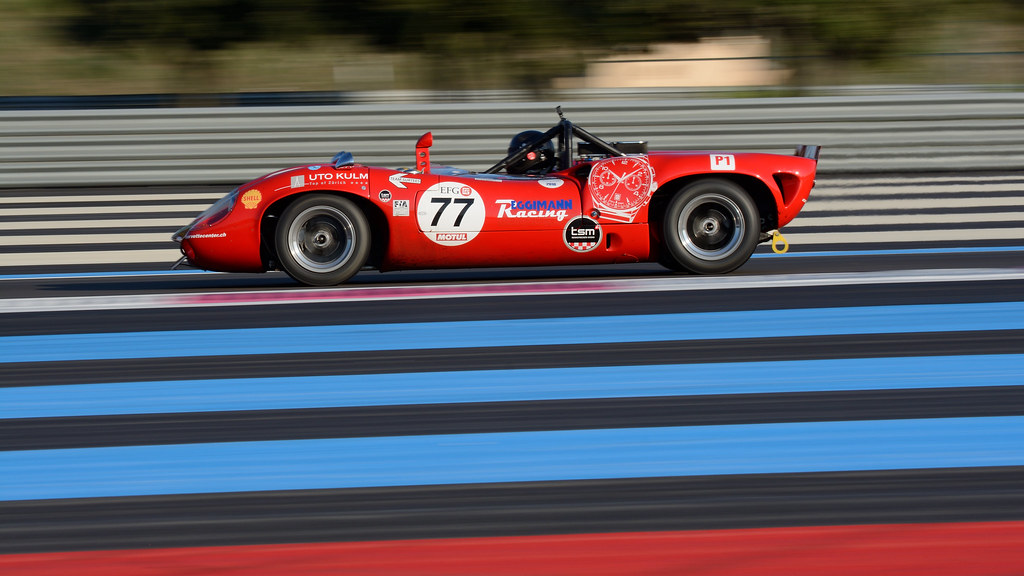
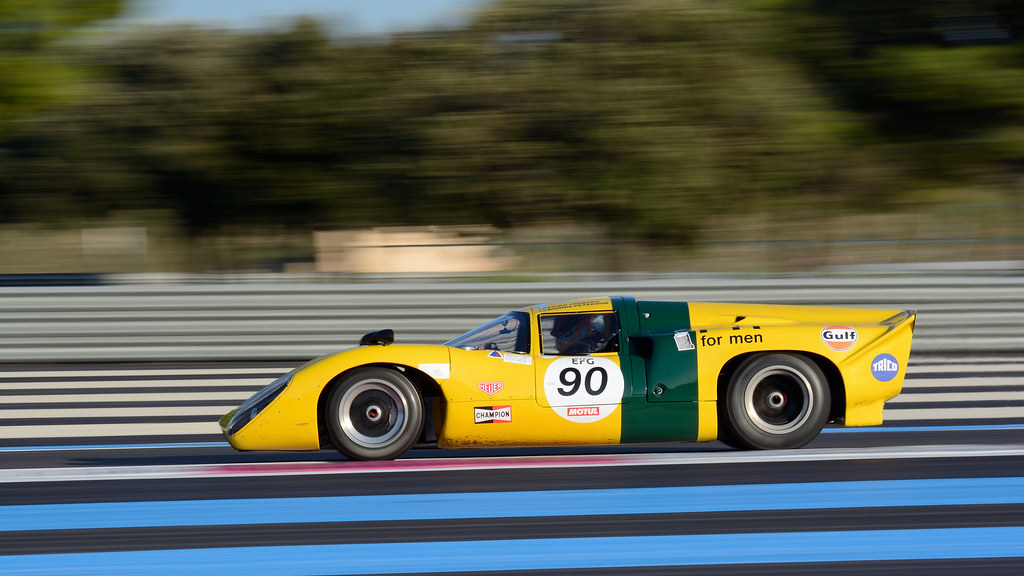
hat about this 1981 Lola T600 and its... Extreme bodywork ? Its story, and my personal interest, justify that we dig a little bit in the past.
It's a prototype, to the creation of which the aerodynamicist Max Sardou participated; indeed, the T600 and its covered rear wheels, aims to maximize the ground effect engendered by the 'tunnels' along its bodywork.
Initially, the goal was to enter the new GTP class in the IMSA american championship. It was a successful attempt : it made Porsche fall from the lead, whereas the German brand was dominating this series since 1977 !
Since it was conform to both IMSA GTP and GroupC regulations, the Lola T600 raced at both sides of the Atlantic.
This #HU3 chassis is fitted with a Cosworth DFV V8, and finished 3rd in class at Le Mans. It also won the Brands Hatch 1000 Kms, with Guy Edwards / Emilio de Villota into the cockpit.
Some decades later, this inovative machine was less successful at Le Castellet; due to a broken back wheel hub, its Saturday performance was shortened, definitively ending its participation to the 10000 Tours event...
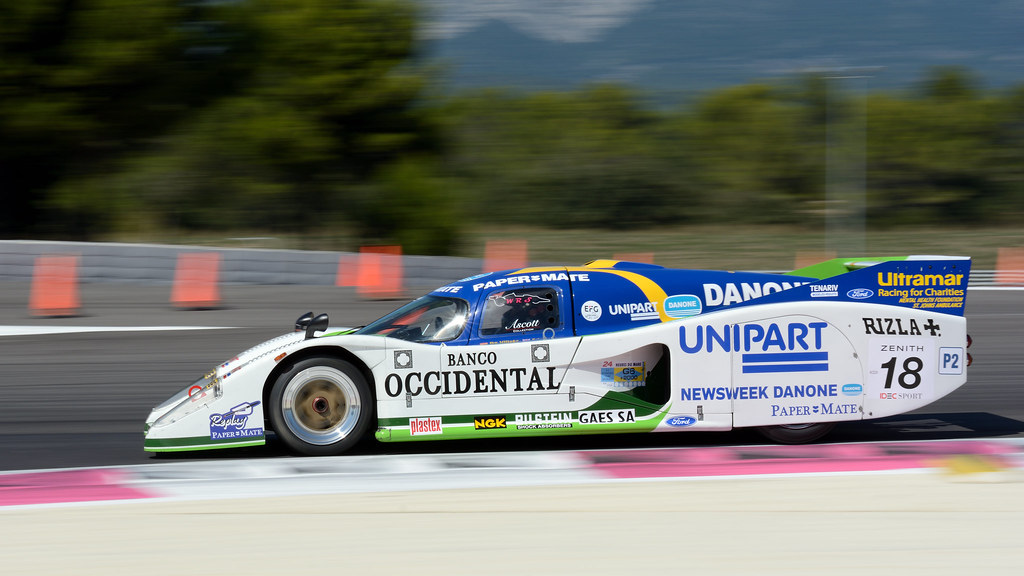
here were also exclusive French prototypes at Le Castellet !
In this historic BP livery, the Ligier JS3 signed a beautiful second place at the 3hrs of Le Mans in April 1971, and won the Monthlery meeting.
Then came the 24hrs; driven by Depailler / Ligier, after 18 hours, it encountered gearbox issues, while it was at the 5th place in the standings. The time lost to repair prevented it to be classified.
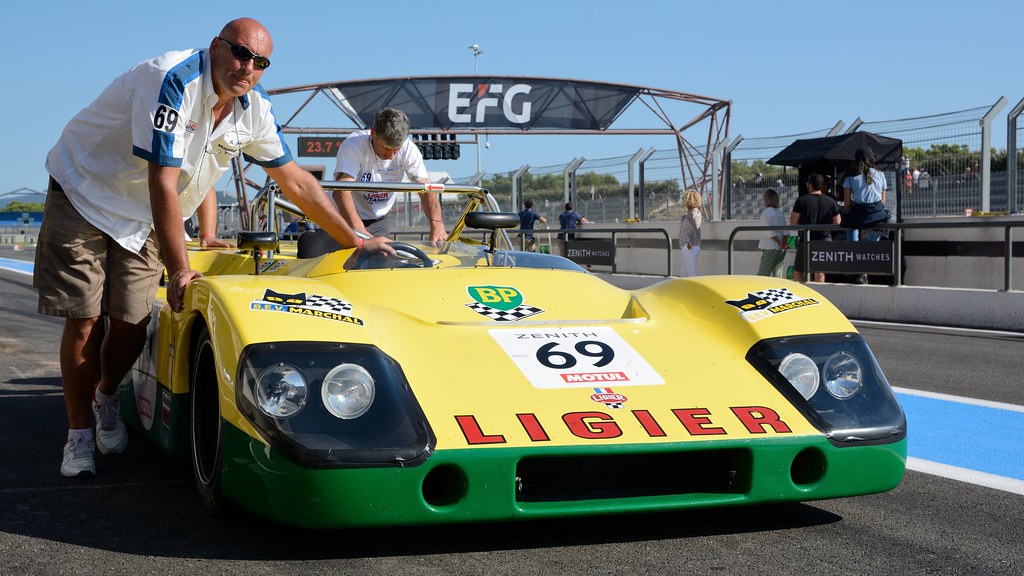
he Rondeau M382 was engaged by the Rondeau factory team, during the 1982 prototypes world championship.
It is a 'mix' of the M482, very sophisticated on aerodynamic side, but the gestation of which took too much time to be ready on time, and the well known M379.
It takes the chassis of the latter version, and the rear suspension of the M482. The wheelbase and the tail are increased to optimize stability and wind resistance.
1982 will be a satisfactory year for Rondeau, that will fail in winning the title, due to a trick of the Porsche factory. The German team conspired backstage with the FIA, to add the results of a private Porsche to its credit !
The M382 is the first Rondeau being sold to private teams, within which some will be racing in the US.
The follow-up of the Rondeau adventure will be a slow decline, due to a lack of financial ressources, that will penalize the development of the complex M482. In 1985, the fatal road accident of Jean Rondeau will sadly end the Rondeau saga.
This chassis is M382-004, which obtained a superb victory at the Monza 1000kms (Pescarolo / Francia), resigned at Le Mans and finished 5th at Spa.

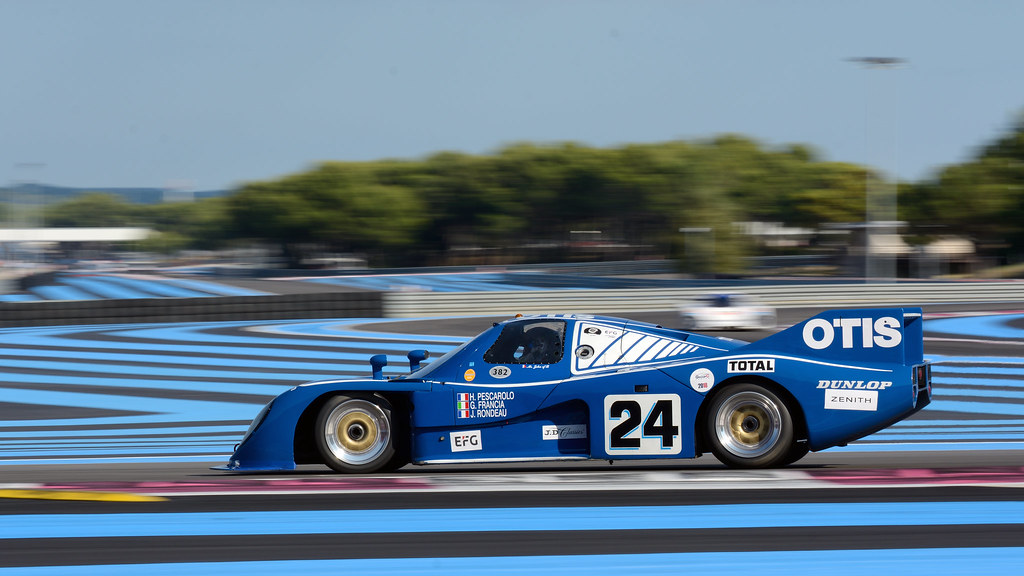
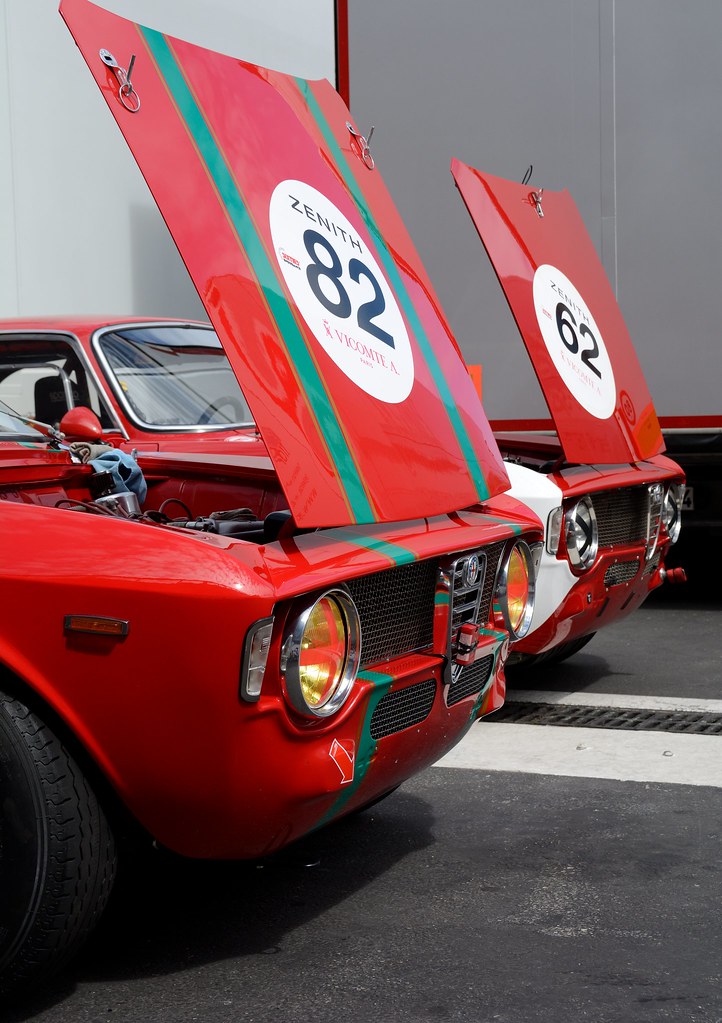
his is the end of the meeting, all teams are packing up...
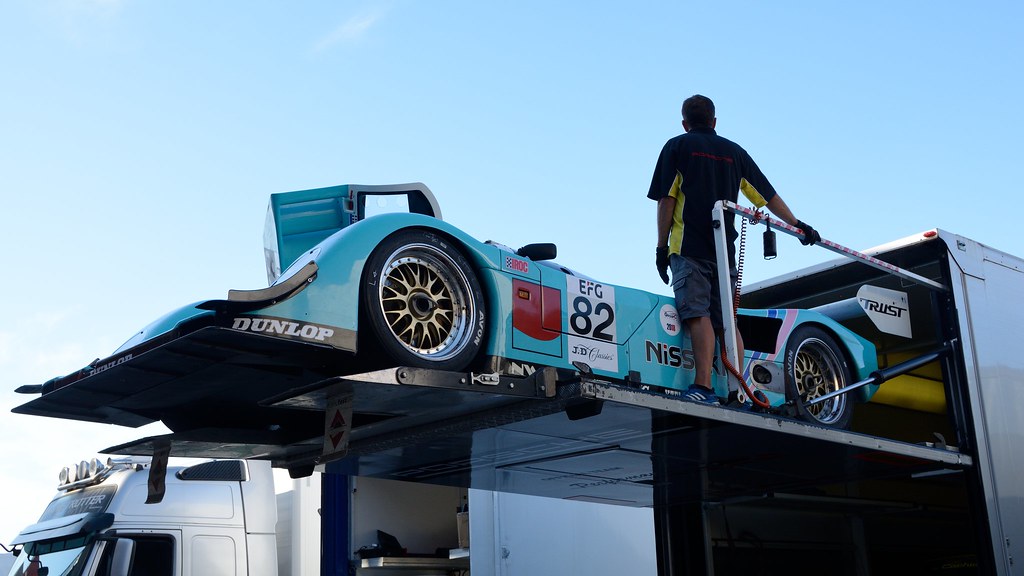
ome competitors have been hit by misfortune, and will need to plan some costs...

...
ood bye, and see you soon at a next event !
 |